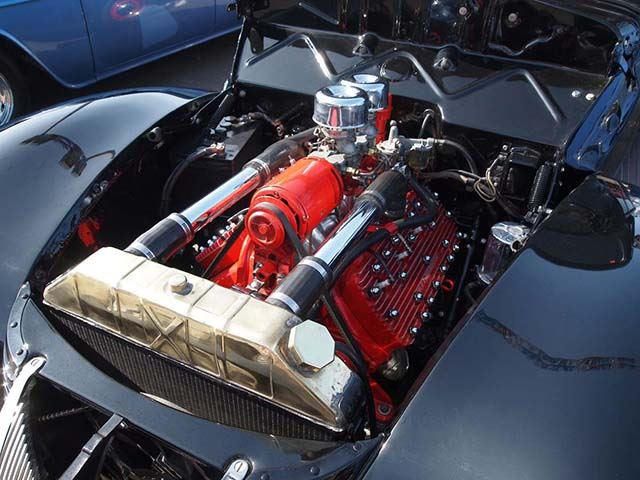
By now V8s are popular enough for just about every auto manufacturer to have one of their own. Even Mazda developed a V8 for a luxury brand, Amanti that was eventually disbanded, but that V8 was never used. The first ever V8s were used in speedboats and aircraft around 1904, but it would be several more years before the V8 would find itself in the engine bay of a car. The red-letter year for a mass-produced, affordable production V8 was 1932 when Ford developed the Flathead V8, which at the time was just referred to as a Ford V8.
It was put into the 1932 Ford Model 18, producing 65 horsepower. Gradual horsepower increases were made every year, until 1953 when production was stopped. The engine had a longer running streak than the 19-year run of the engine in the Model T at 21 years. The biggest one made, a 337ci block, produced 145 horsepower about two years before the Y block was introduced in 1955. The flathead was unique in design. Traditionally an engine's intake and exhaust valves are perched inside of the cylinder head(s), but with a flathead engine the valves sit inside of the block. In fact when the flathead V8 was made it was the first time a V8 had cylinders and crankcase in the same block.
Ford's flathead, or "side-valve" V8 had a few advantages, namely it was small and reliable, simple and at the time of its release, cheap. There were disadvantages too, and one glaring disadvantage that seemed to far outweigh the advantages.
The flathead suffered from poor fuel flow, which resulted in overheating and low power. The pathway for fuel to reach the cylinder was, because of the design of the engine, crowded and convoluted. The fuel had to travel around the obstacle of the engine block to reach the valve, and this coupled with the small amount of space between the cylinder head and block, meant the fuel had a constricted flow. At low RPMS this wasn't such a huge issue until more was demanded of the engine. It was like the flow couldn't compete with the revolutions. In order for higher revs to be effective the fuel had to go in and be exhausted at a faster rate, which was made difficult by the aforementioned crowded pathways.
Despite these disadvantages, the flathead V8 became the engine for hot rodders of the day. Because of its power, reliability, compact design and cheap price, the flathead V8 paved the way for innovation in performance.

